In East Asia, New Year flowers are potted flowers with lucky meanings to embellish the room during the lunar new year. For example, peach blossom means "being lucky in love" and "achieve your ambition", mandarin orange means "obtain amazing result" and "good luck". New Year flowers are purchased before the first day of the lunar new year, and they will be displayed at home or in the office until the Lantern Festival ends or even the first lunar month ends according to their shelf lives.
Related: Chinese New Year Flowers: Give Gift Boutique in Central Market
The Origin of New Year Flowers
Tang Dynasty
The tradition of displaying New Year Flowers can be traced back to the Tang Dynasty. They were used to pay tribute to heaven and ancestors, and to pray for nice weather, wealth, and peace in the coming year. People in Tang Dynasty love luxury things and peonies. There are mainly two types of flower arrangements: plate flowers and vase flowers. Plate flowers, which symbolize the earth and the lake, create an artistic and exquisite ambiance of wonderful nature; vase flowers, which have the blessings of safe and healthy, are quite pretty and elegant.
Song Dynasty
In Song Dynasty, people have created flower baskets of various types, and the design can be ornate or minimal. The plentiful kinds of flowers make it able to create a luxurious style that symbolizes prosperity and the powerful nation. And the flower baskets with minimal styles can create an unadorned elegance that expresses the vibe of the noble characters pursued by the ancient scholars. Being affected by rationalistic Confucian, the flowers which have meanings of noble characters and the branches with only leaves such as lingzhi mushroom, pine branches, plum blossom, lily, are loved by the popularity.
Ming Dynasty
People in Ming Dynasty have created a style of flower arrangements called "the flowers of the scholars" which is combined with pine branches, plum blossom, camellia, lily, and persimmon, and the ornate "Shiquan" vase flowers which is combined with pine branches, bamboo, plum blossom, cypress branches, camellia, orchid, lingzhi mushroom, daffodil, winter daphne, rose, nandina, persimmon, sesame stalks, and so on. Each kind of cut flower has the meanings of noble characters and they are often displayed in the hall to express the dignified vibe the ancient people adores.
Qing Dynasty
The trays for new year flowers in Qing Dynasty look luxurious, and most of them are made from porcelain. Some trays for new year flowers with innovative images of vegetables and fruits are called "Guopanhua" or "Guogong", and they have the meanings of "all things going well" and "many children". During this time, it appears flowers arrangements inspired by homophonic words to form blessings on the market, for example, there is a work of flower arrangement at that time called "great career" which is combined with copper coins, whisks, evergreen, and plums.
The Modern Time
The new year flowers of today are mostly inspired by the homophonic words or the images with auspicious meanings. In addition to peach blossom and mandarin orange, there are gladiolus represents "getting a promotion", lily represents "the lifelong happy marriage", lucky bamboo represents "wealth" and "good luck", etc.
Types and Meanings of Traditional New Year Flowers
1. Orchids
Orchids of the new year flowers have the meanings of harvest, prosperity, and reunion, and of them are phalaenopsis orchid. Red phalaenopsis has the meanings of "everlasting love of the couple" and "great fortune on the way", yellow phalaenopsis represents a successful career and a thriving business, white phalaenopsis represents pure love and precious friendship, and the purple phalaenopsis represents happiness and elegance. Phalaenopsis is a shade-tolerant ornamental flower that grows well at the temperature of 15-25 ℃. With careful gardening, it can bloom for 3 months and even bloom twice a year. Keep water away from the buds and blossoms when spraying, and phalaenopsis be kept in the finest status for a longer period.
2. New year citrus plant
In Chinese, the mandarin orange is called "Nian Ji", and "Ji" is the homophonic word of "luck". Thus, during Spring Festival, many shops, companies, and hotels display large mandarin orange trees and hang envelopes of luck money on them to wish themselves good luck and large business deals in the new year. At this time, the elders will give mandarin oranges to the youths who come to visit them, which means "sharing sweetness together". People often purchase kumquat mandarin, calamondin orange, and vermillion orange. The kumquat mandarin appears an oval shape, it can be eaten with the skin and it is good for the throat. The calamondin orange tree is more fruitful, and the golden round fruits can be made into the famous snacks called "salted kumquat". The vermillion orange is larger than kumquat mandarin and calamondin orange, is has a height of 2 to 6 feet and it is usually displayed in public places to create a strong festive atmosphere.
3. Daffodil
Daffodil is also popular in Chinese New Year and it has the blessings of noble and auspicious. It has a rich fragrance and it is a nice material for making high-end essential oil. It grows well at the temperature of 10 to 20 ℃, and it is better to have 4 to 6 hours of sunlight per day. It usually blooms after 20 days of proper gardening. But if it is warm, you can plant the Daffodil in water for 15 days before the Spring Festival comes, and it often blooms for 20 days.
4. Pussy Willow
The pussy willow is called "Ngan Lau" in Cantonese, and "lau" is the homophonic word for "house", which means "a lot of money and many houses". The branches of pussy willow are covered with fluffy little balls which are often dyed in red, yellow, blue, green, and so on. The pussy willow has meanings of "good harvest" and "getting a promotion", it is an easy plant that likes warm and humid weather and can keep the flowering period for 2 months. Thus, the pussy willow is also very popular.
5. Winter Jasmine
Winter jasmine is also called "Golden Belt" or "Gold Strings", for it blooms small golden blossoms in early spring. Winter Jasmine is cold tolerant and likes warm, it grows well at the temperature of 10 to 15 ℃. The blossoms wither earlier as the room temperature gets warmer. Therefore, you can prolong its flowering period by lowering the temperature to 8~10 ℃. It can last for 30~40 days with careful gardening.
6. Nipple Fruit
In Chinese, the nipple fruit is called "Wu Dai Tong Tang", for it has golden fruits, and it looks like the harmonious scene of family members sitting together and chatting happily. Thus, it has auspicious meanings of "many children", "a lot of money", and "great fortune". The normal nipple fruit can last for half a year, but the nipple fruit we can buy from the market is just a potted plant of cut branches from fruit trees, thus it can only last for a month.
The Lucky Position of New Year Flowers Arrangements
In the year of tiger, the lucky position of wealth is on the northeast. Placing flowers with large leaves in this position can bring fortune. The north is a lucky position for love, and you can place gorgeous flowers with a long flowering period such as orchids, peach blossoms, etc. The south is a position of good luck, you can place fruits of bright color such as the nipple fruit and the mandarin orange, to wish for the birth of children and great fortune of money. The southeast is lucky for scholarships, you can place lucky bamboos to wish for passing exams, getting promotions, and gaining fame. However, you should not place flowers on the east, otherwise, there may be a dispute or even a lawsuit.
New Year Flower Delivery Service of Give Gift Boutique
Blending both Chinese traditional culture and the latest styling trends, our professional florists have created a series of festive flower gifts for auspicious occasions. You can feel free to make orders online and we support bulk orders to different recipients. The professional team will keep the gifts from collisions and deliver them straight to your recipients' door.
This is a Hong Kong GGB original 'Guide to Purchase Lucky Flowers for the Lunar New Year' blogpost.







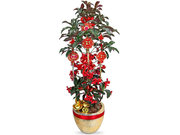
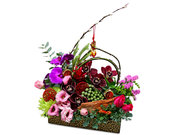
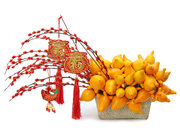
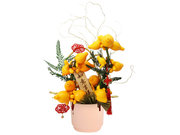

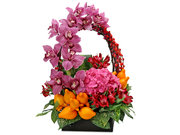


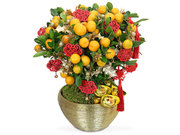
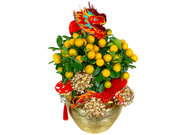

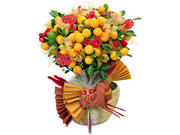

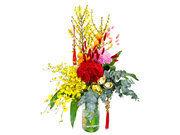

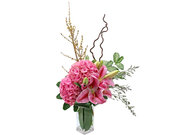
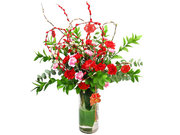
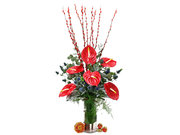
 Share
Share Tweet
Tweet +1
+1  Pin it
Pin it Post
Post  Weibo
Weibo Review
Review

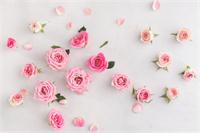
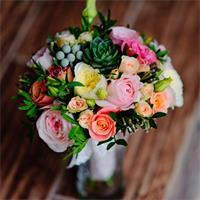
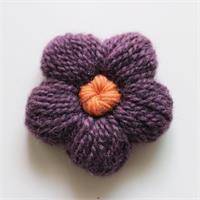
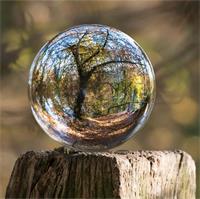

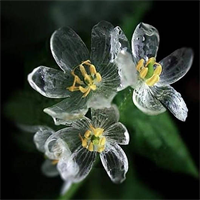
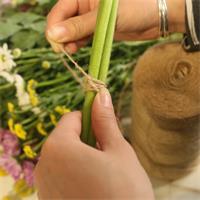
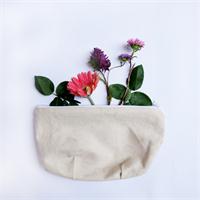

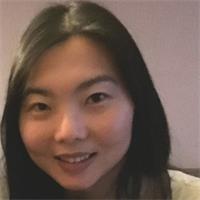


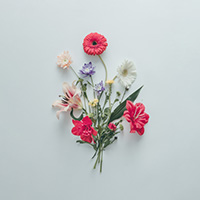
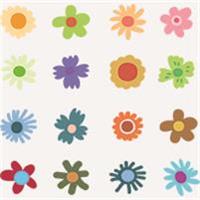
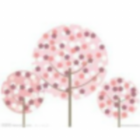



 Diwali Gifts
Diwali Gifts 
 ▶
▶